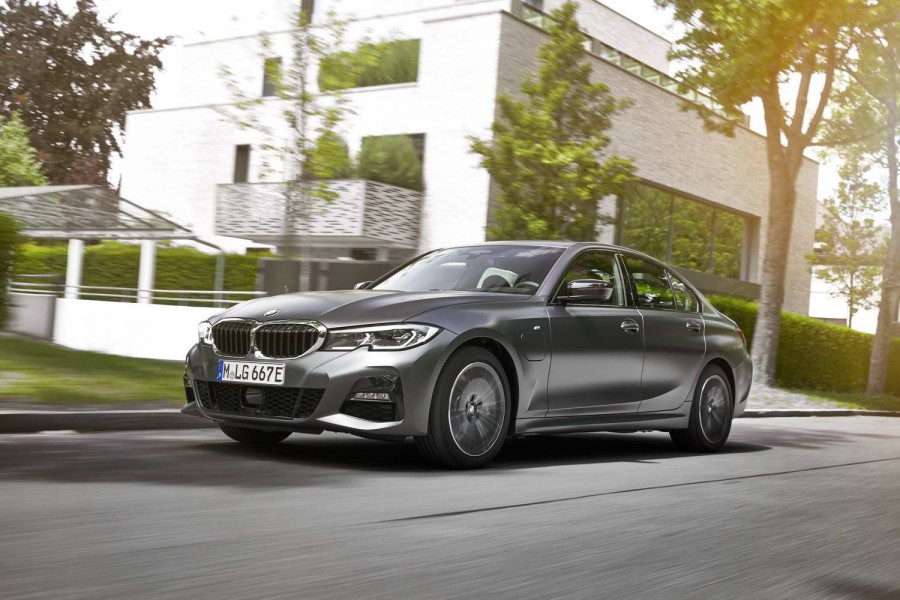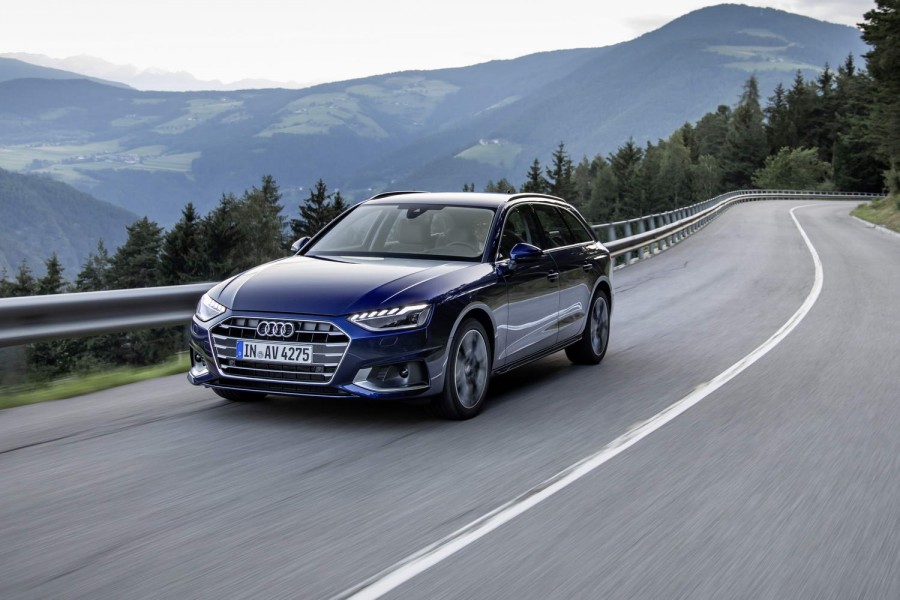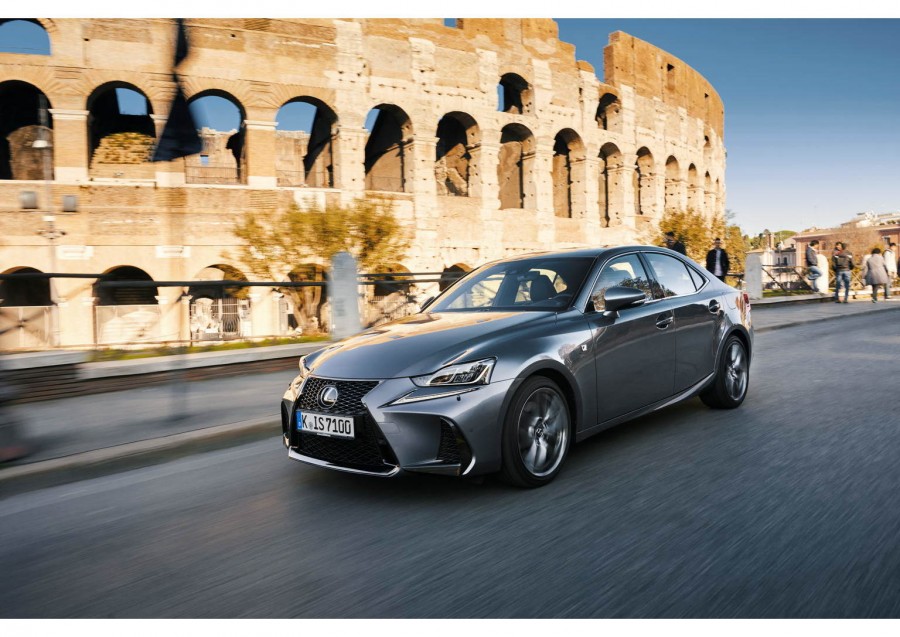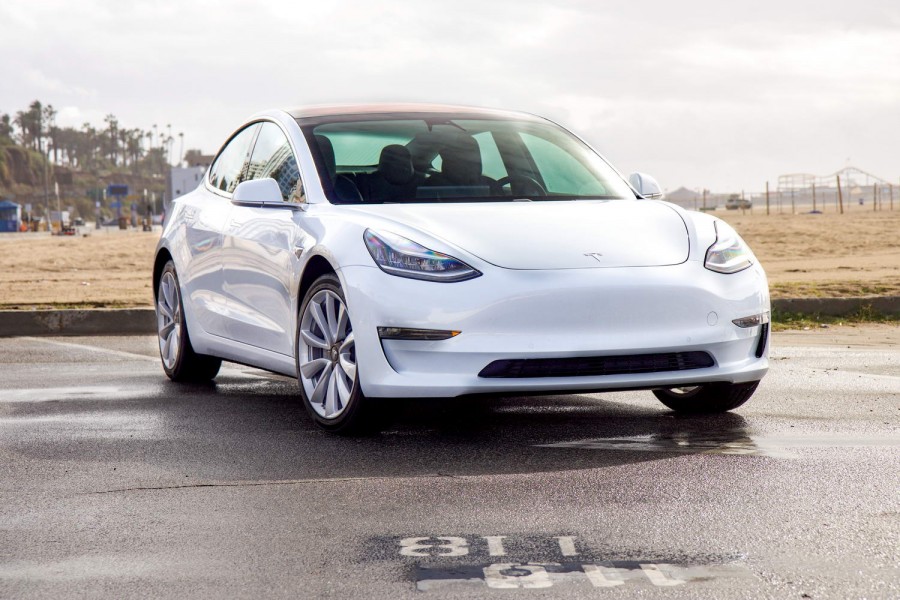The new BMW 330e launches into a market essentially bereft of competition. Audi offers only petrol or diesel A4s, while the plug-in-hybrid Mercedes C-Class is special order only, and the Lexus IS 300h is ageing fast. Impressive technology underlies what might just be the default new 3 Series.
In the metal
As we've noted elsewhere, the current BMW 3 Series has some slightly controversial styling, that can appear far too heavy-handed from some angles, and which from the rear looks almost like a knock-off of a Lexus IS 300h saloon. Equally, from some other angles, and in certain colours (especially the frozen grey matte paint of our test car) it can look hugely handsome and staggeringly desirable. Take your pick...
The 330e plug-in-hybrid version is now slightly less distinctive within the range than it used to be. BMW has excised the little 'eDrive' badge from the rear pillar, so now all that differentiates this from the standard model is the flap for the charging plug on the front wing, and the 330e badge on the boot lid. It is arrestingly normal, if that's not an oxymoron, and perhaps that's as it should be - after all, given the potential changes in the tax system that are currently in the offing, this might well become the default 3 Series choice.
Inside, the only giveaway that you're driving a car that's half-electric are the battery and hybrid mode switches on the centre console, and some additional displays within the big digital instrument screen, which can show you how fast you can go and how much you can accelerate before the petrol engine takes over from the electric motor. In this case, the 330e gets an improvement over the old model - before, you could only go as high as 80km/h in hybrid mode before the petrol engine would kick in; now it's up to 110km/h.
There's more speed and more range when you're running in fully charged up electric mode now too. BMW has increased the battery capacity to 12kWh (up from 7.6) so even on the tougher WLTP economy and emissions test, you can get better than 50km on a full charge of the battery. You can drive at speeds of up to 140km/h in the all-electric mode, too.
Other changes include some updates to the 330e's infotainment. There's now a built-in dashcam system, which uses the cameras for the 360-degree parking assistant, and an option that finds interesting places to visit, or just somewhere nice for a coffee, near charging points if you want to juice up while out and about. You can of course charge the battery from the petrol engine while driving, but BMW says that's not a great idea from a fuel economy point of view.
What you can do is set a destination in the satnav and let the hybrid system's computer decide how best to parcel out the power, and at which points in the journey it can maximise the energy recuperation. The objective is to maximise economy and to arrive at an urban area with enough charge in the battery for zero-emissions running. The system is also smart enough to be able to recognise when it's entering a city centre low emissions zone and switch to battery power as needed.
Driving it
Probably the best thing about the 330e plug-in-hybrid is that it doesn't drive like a hybrid. The electric motor is integrated into the ZF-supplied eight-speed automatic gearbox, so there's none of the stretchy-band sensation you get from driving a hybrid with a CVT. The powertrain feels crisp and pretty seamless as it switches between petrol and electric power, or both. The four-cylinder's exhaust note isn't especially inspiring, but there is an augmented sound system when you're running in Sport mode that does help.
Performance is impressive. The electric motor kicks in with 265Nm of torque at zero rpm, and then the petrol motor adds in 420Nm. Combined, the two can easily chirrup the rear tyres even on a baking hot, dry day and the 330e's performance never feels less than entertainingly muscular. Peak power is an impressive 292hp, but that's incorporating an additional 41hp 'overboost' facility, called XtraBoost, which if there's sufficient charge in the battery, can over crank the electric motor to provide extra thrust. It only lasts for about ten seconds at a time, though, but even without it the 330e's power output matches that of the 330i petrol model.
What about economy, though? What about electric range, though? Well, we only had a limited amount of time with the car, and a fairly limited test route, so I'll lay out what we managed to do, and you can take things from there. Your mileage will almost definitely vary.
Starting with a fully charged battery, we drove for 26km on pure electric power, stropping along the motorway at up to 130km/h with ease. At 26km, we decided to switch over to hybrid power, and had an indicated 19km range left in the battery as we did so. We then completed a further 60km on a mixture of country and urban roads, switching between Hybrid and Sport modes. We ended up at our destination with an indicated 1km of battery range left, having recorded 3.8 litres per 100km economy (about 75mpg). Impressive? Well, it's not the official 156mpg economy, but it seems pretty good considering that we were making liberal use of the 330e's power for much of the time, and that a long stretch was spent at motorway speeds. Certainly, for anyone coming out of a diesel 3 Series, that looks very economical, but it remains to be seen if it can be sustained over a longer journey.
In the meantime, the 330e drives like a standard 3 Series, and praise comes no higher than that. The steering is perhaps a shade lighter than that of the standard car's, and you can feel the extra 200kg of weight in the way it rides (go for the softest springs and the smallest wheels, would be my advice), but the precision, the feedback, the sheer fun is still there. Despite the extra weight, the 330e still rotates into a corner with engaging precision, so yes - you can save the planet (so to speak) and still have fun behind the wheel.
What you get for your money
Taken at face value, the 330e looks like staggeringly good value. Thanks to the €5,000 SEAI grant and the €2,500 rebate on VRT, you can buy one - a nigh-on 300hp sports saloon, we'd remind you - for less than the cost of the most basic 320i. Now, that situation becomes a little more opaque depending on what the Government decides to do with the budget in October, and a huge amount will hinge on whether or not that SEAI grant is retained, but right now (or at least in September when the 330e arrives here) this is one of the bargains of the whole year.
Summary
Can a complicated plug-in-hybrid model really be the out-and-out choice of the BMW 3 Series range? On this evidence, yes it can. Despite the extra weight and complexity, the 330e drives like a 3 Series ought to and, within the limited parameters of this test, its real-world electric range and hybrid economy are both very impressive. And it's cheaper than the cheapest diesel. Game over for the 320d, on this showing.






































